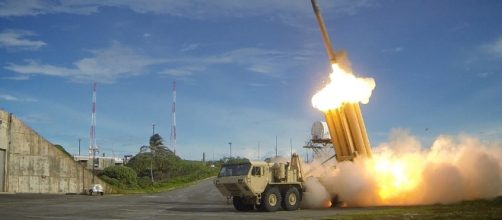The US-built anti-Missile Defense System has successfully achieved its goal during the test on Tuesday, the US Missile Defense Agency announced. The Terminal High Altitude Area Defense system (THAAD) has successfully targeted Alaska's goal, the MDA said.
US Department of Defense official told reporters that the test is not tied to the recent launch of North Korean intercontinental ballistic missiles (ICBM). According to Lockheed Martin, the airspace and the security company that serves as the main contractor for the team, Each THAAD system consists of five key components: interceptors, launchers, radars, firefighting units and support devices.
Launching of the THAAD
Radar first detects the launching rocket, those who deal with the system identify the threat, which Lockheed Martin calls the "interceptor" in a ballistic missile, in the hope of destroying it with Kinetic energy. The escalation of the phenomenal nuclear program has led to a closer look at the capability of the missile defense system held by the US and its allies.
The US military has already begun to deploy the THAAD system in South Korea earlier this year, which was much worrying for some of its neighbors in Seoul. Their presence is strongly opposed by China, Russia, and North Korea, who say THAAD is fueling the arms race. Analysts say the biggest concern in Beijing is that powerful THAAD radar can be used to provoke China and deny its preventive capabilities.
The system also has critics in South Korea. The distribution of THAAD was approved by the former President of South Korea Geun-hye Park, who is currently embroiled in a corruption scandal. Her successor, Moon Jae, campaigned for a promise that the case would be returned to the country's parliament.
The Moon has suspended the use of THAAD in the expectation of an environmental impact assessment.
Repeated attempt to achieve target
Last month, an American and Japanese test rocket carried out in Hawaii did not reach its goal, but both stopped saying it had failed. In May, the Pentagon successfully dropped the intercontinental ballistic missile using its updated missile launch missile.
This test consisted of the release of a new version of terrestrial land-based rockets, currently in Alaska and California.
This program has been in existence for more than a decade, but only half of the tests have been successful, according to the Ministry of Defense. While the Pentagon has called the test strike, some experts have warned that a 40 billion dollar refusal missile system still has a far-reaching path before it can be considered fully developed.


